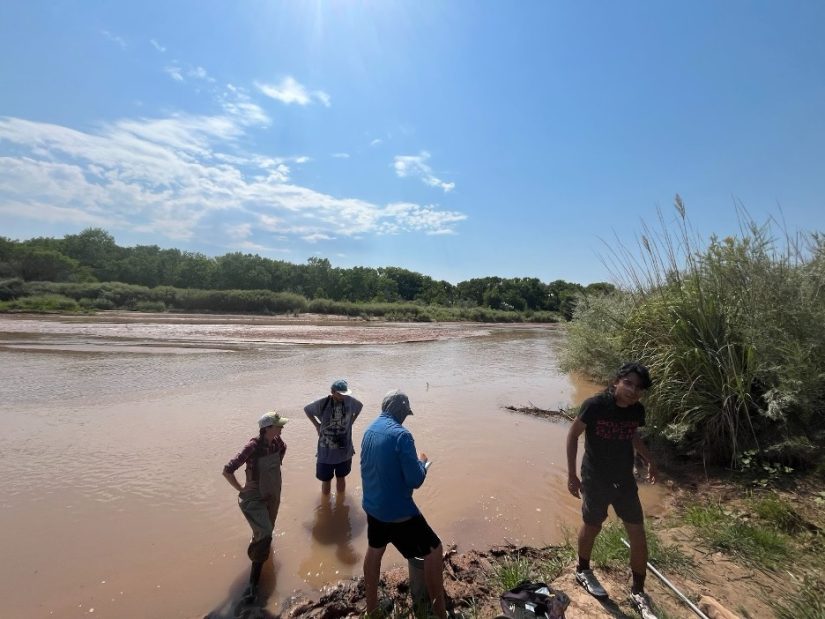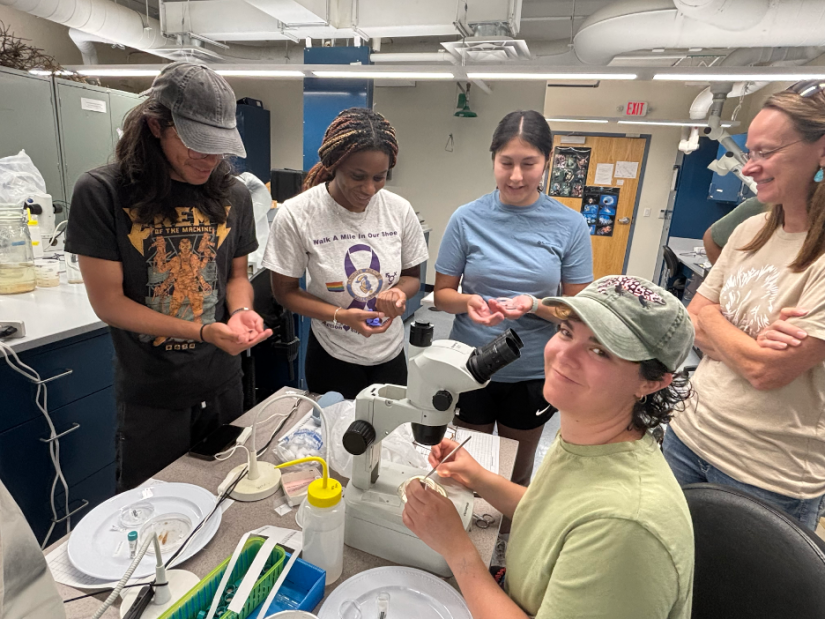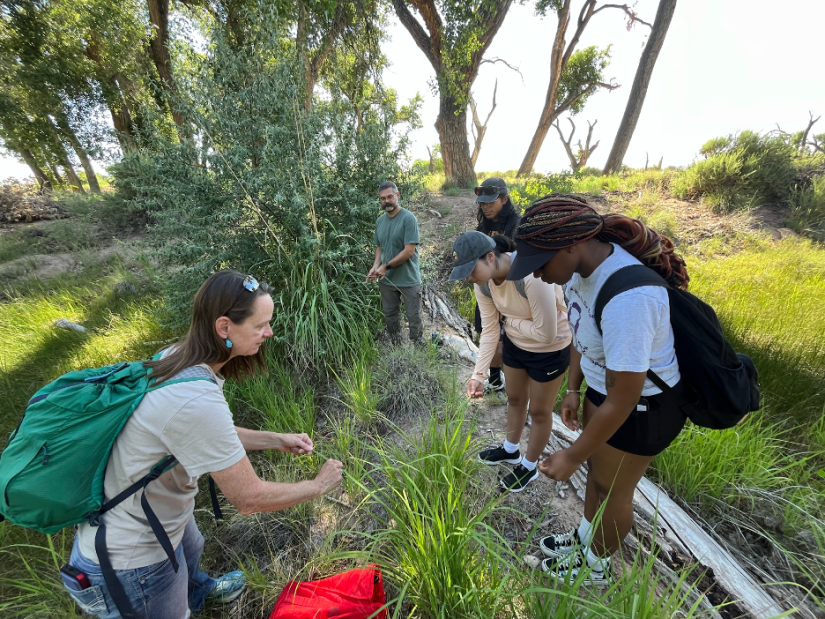Summer research on the Rio Grande
During the summer of 2025, members of the Wood Lab travelled to Albuquerque, New Mexico to work with Drs. Tom Turner and Sara Brant from University of New Mexico Museum of Southwestern Biology to quantify the change in parasite abundance and diversity in the Rio Grande over the past 72 years, a period stretching from 1938 to 2010. Tom is the Curator of the Fish Collection and Sara is the Manager of the Parasite Collection.

The team from the University of Washington (Professor Chelsea Wood, Research Technologist and Lab Manager Katie Leslie, and graduate students Gabby Commisso and Connor Whalen) teamed up with undergrad REU students from around the country: Bradyn Perron – University of Washington, Janell Goldsmith – Neumann University, and Eliana Ortega – New Mexico State University, as well as collaborators Armand Kuris – University of California Santa Barbara and Maarten Vanhove – Hasselt University.

The project involved measuring how urbanization impacts parasites in the Rio Grande before, during, and after the city of Albuquerque came into existence. The team subsequently dissected nearly 1000 fish and found thousands of parasites. This work answers three main questions:
- How has the abundance of parasites in river ecosystems changed over the past half century?
- What roles has urbanization played in shaping change in parasite abundance through time?
- How does urbanization affect the stability (i.e., resistance + resilience) of parasite communities as they experience other disturbances (e.g., drought)?
REU (Research Experiences for Undergraduates) are supported by the National Science Foundation (NSF) to provide students with paid summer research opportunities in various scientific fields.
